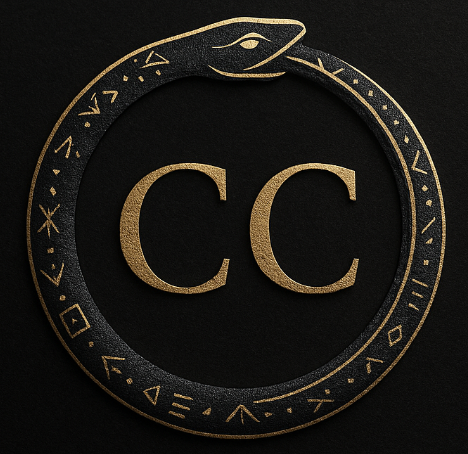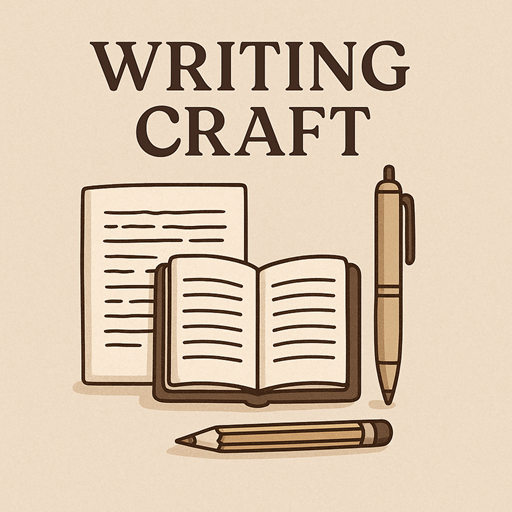Introduction: When Philosophy Meets the Page
Writers are, by nature, philosophers in disguise. Every story we tell, every world we build, is an exploration of what it means to be human—or in some cases, more-than-human. But what if we had a map to help navigate the complex terrain of consciousness, society, and transformation? Enter Ken Wilber’s Integral Theory, a multi-dimensional framework that brings together psychology, spirituality, sociology, and systems thinking into a single coherent model.
What if your protagonist’s inner struggle could be charted not just emotionally, but developmentally? What if your fictional society could reflect real-world patterns of evolution and regression? What if every subplot and side character had a place on a rich, integral map?
Let’s explore how Wilber’s AQAL model—All Quadrants, All Levels, All Lines, All States, All Types—can serve not just as philosophical inspiration, but as a practical tool for storytelling.
Integral Theory 101 (for Writers)
Integral Theory can be boiled down (very lightly) into several core components:
The Four Quadrants
These represent four dimensions of reality, each offering a unique perspective on any given phenomenon:
- Upper Left (UL) – Interior Individual: Thoughts, emotions, consciousness. (Your protagonist’s inner world.)
- Upper Right (UR) – Exterior Individual: Behavior, biology, actions. (What they do.)
- Lower Left (LL) – Interior Collective: Culture, shared meaning, values. (Society’s myths and norms.)
- Lower Right (LR) – Exterior Collective: Systems, institutions, technologies. (The societal structures that shape behavior.)
Writing Hack: Make sure your story engages all four quadrants. A character’s transformation (UL) should be mirrored in their actions (UR), challenged by their culture (LL), and limited or liberated by their social systems (LR).
Levels and Spiral Dynamics
Wilber integrates Spiral Dynamics, a model of value systems and developmental psychology. Each level of the spiral represents a worldview:
- Beige: Survival
- Purple: Tribal, magical thinking
- Red: Power gods, egocentric
- Blue: Order, law, religion
- Orange: Rational, achievement, science
- Green: Relativism, equality, pluralism
- Teal & Beyond: Integrative, systemic thinking
Writing Hack: Use Spiral Dynamics to place your characters and societies on a developmental map. Conflicts often arise between levels (e.g., a Green protagonist in a Red culture). This naturally generates internal and external friction.
Lines of Development
These are multiple intelligences or “lines” along which people develop—cognitive, emotional, moral, interpersonal, etc. A character might be highly evolved spiritually but immature emotionally.
Writing Hack: When designing characters, note where they’re uneven. This is a goldmine for tension and growth arcs.
States
States are temporary experiences—anger, flow, dreams, mystical visions. Some characters might glimpse higher states but not live there consistently.
Writing Hack: Use states to create liminal moments of transformation or insight—visions, breakdowns, epiphanies.
Types
Types include personality styles (like the Enneagram or Myers-Briggs), gender expressions, or archetypes. They don’t develop, but they diversify how development looks.
Writing Hack: Assign types to characters for internal coherence—and variety across your cast.
Applying Integral Theory to Story Craft
Now that we’ve built the model, let’s bring it onto the page.
1. Mapping Character Arcs with the AQAL Grid
Take any major character and place them in the quadrants:
- UL: What are they afraid of? What are they learning? What stories do they tell themselves?
- UR: How does that show up in action? Do they lie, retreat, lash out?
- LL: What beliefs from family or culture shaped them? What memes are they swimming in?
- LR: What societal systems (war, poverty, gender norms) keep them stuck?
Now, imagine that change in one quadrant must ripple through the others. That’s the shape of transformation.
Example: A warrior in a patriarchal society (Red/Blue) begins to question the morality of violence (Green). His interior growth (UL) challenges his role in the army (UR), strains relationships with comrades (LL), and threatens the military-industrial complex (LR).
2. Building Worlds That Breathe
Worldbuilding often focuses on the Lower Right: politics, economies, magic systems. But richer worlds also evoke:
- LL: What do people believe? What rituals bind them?
- UL: How do people dream, pray, suffer?
- UR: What tech do they use? What are their bodies like?
Writing Hack: Use Spiral Dynamics to layer social evolution into your world. Maybe your kingdom is in a Blue-to-Orange transition—science challenging religion. That tension can drive plot, culture clash, and even magic vs. reason.
3. Designing Meaningful Conflict
Integral theory helps you go beyond “good vs. evil.” Many great conflicts are really developmental conflicts.
- An Orange scientist vs. a Blue priest
- A Green pacifist struggling with a Red warlord
- A society at Teal watching its lower levels rise in revolt
No one is purely wrong—just operating from different worldviews.
Writing Hack: Show that every level had a purpose. Red brings power, Blue brings order, Orange brings progress. Conflict becomes not about defeating the other, but integrating what’s been lost.
4. Plotting Shifts in Consciousness
Integral fiction is about evolution—of minds, cultures, and realities. Major story beats can align with quantum shifts in development:
- A breakdown that leads to a breakthrough
- A disillusionment that opens into deeper truth
- A collapse of one system and emergence of a new one
Writing Hack: Map the stages of your protagonist’s journey along developmental lines. Are they moving from dependency to autonomy? From rigid dogma to post-conventional ethics? This gives your story a spine of real transformation.
Final Thoughts: Fiction as Evolutionary Practice
Ken Wilber once said, “Everybody is right. More specifically, everybody has some important pieces of truth.” That’s a perfect credo for storytellers.
By applying Integral Theory, we don’t just craft better characters—we hold the evolution of consciousness as a living theme in our stories. We stop writing cardboard villains and start writing people who make sense from within their worldview.
Whether you’re writing sci-fi, epic fantasy, literary drama, or political thrillers, the Integral lens can sharpen your plotlines, deepen your characters, and illuminate your themes.
Storytelling becomes not just entertainment—but a kind of evolutionary art.
Bonus: Writing Prompts from the Quadrants
- UL: What belief does your protagonist hold that no longer serves them?
- UR: What is their most telling action when under pressure?
- LL: What myth or cultural story do they secretly believe?
- LR: What system must collapse for them to be free?
Want to Go Deeper?
There are many more applications of Integral Theory to storytelling—limited only by the imagination. Whether you’re crafting inner journeys of selfhood, epic tales of civilizational change, or intimate dramas of moral evolution, Wilber’s framework offers a lens as complex and layered as life itself.
If this article has sparked your interest, here are some excellent resources to dive further into the Integral world:
Recommended Readings by Ken Wilber:
- A Theory of Everything: An Integral Vision for Business, Politics, Science and Spirituality
A concise and approachable overview of Wilber’s framework, ideal for newcomers. - Integral Psychology: Consciousness, Spirit, Psychology, Therapy
Explores the many lines and levels of human development through a psychological lens—rich material for character work. - Integral Spirituality: A Startling New Role for Religion in the Modern and Postmodern World
A deeper and more challenging dive into the role of spiritual states and structures within the AQAL model. - The Integral Vision: A Very Short Introduction to the Revolutionary Integral Approach to Life, God, the Universe, and Everything
A beautifully illustrated and accessible summary of Wilber’s core concepts—perfect for visual thinkers and busy creatives. - Sex, Ecology, Spirituality: The Spirit of Evolution
A foundational and ambitious work that links consciousness, culture, and cosmos. Dense but deeply rewarding for worldbuilders and seekers alike.
Whether you’re a writer of fiction, a philosopher at heart, or simply someone drawn to the deep structures of human meaning—Integral Theory offers a map not just of what stories are, but what they can become.



